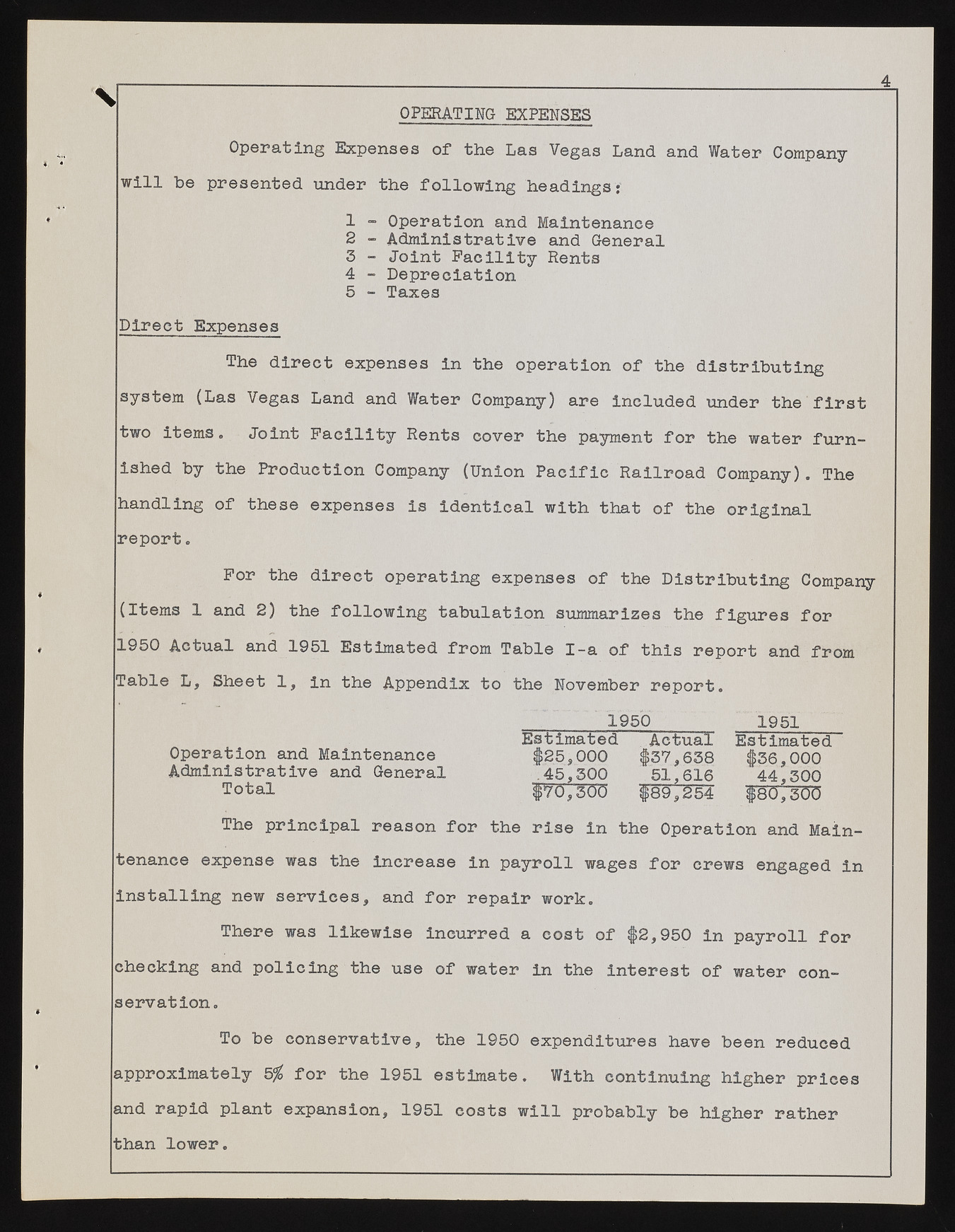Copyright & Fair-use Agreement
UNLV Special Collections provides copies of materials to facilitate private study, scholarship, or research. Material not in the public domain may be used according to fair use of copyrighted materials as defined by copyright law. Please cite us.
Please note that UNLV may not own the copyright to these materials and cannot provide permission to publish or distribute materials when UNLV is not the copyright holder. The user is solely responsible for determining the copyright status of materials and obtaining permission to use material from the copyright holder and for determining whether any permissions relating to any other rights are necessary for the intended use, and for obtaining all required permissions beyond that allowed by fair use.
Read more about our reproduction and use policy.
I agree.Information
Digital ID
Permalink
Details
More Info
Rights
Digital Provenance
Publisher
Transcription
4 OPERATING EXPENSES Operating Expenses of the Las Vegas Land and Water Company will be presented under the following headings: 1 - Operation and Maintenance 2 - Administrative and General 3 - Joint Facility Rents 4 - Depreciation 5 - Taxes Direct Expenses The direct expenses in the operation of the distributing system (Las Vegas Land and Water Company) are included under the first two items. Joint Facility Rents cover the payment for the water furnished by the Production Company (Union Pacific Railroad Company). The handling of these expenses is identical with that of the original report. For the direct operating expenses of the Distributing Company (Items 1 and 2) the following tabulation summarizes the figures for 1950 Actual and 1951 Estimated from Table I-a of this report and from Table L, Sheet 1, in the Appendix to the November report. 1950 1951 Estimated Operation and Maintenance $25,000 $A3c7t,u6a5l8 Es$t3i6m,a0t0e0d Administrative and General .45,300 51,616 44,300 Total 1*70,300 $89,254 $80,300 The principal reason for the rise in the Operation and Maintenance expense was the increase in payroll wages for crews engaged in installing new services, and for repair work. There was likewise incurred a eost of $2,950 in payroll for checking and policing the use of water in the interest of water conservation. To be conservative, the 1950 expenditures have been reduced approximately 5% for the 1951 estimate. With continuing higher priees and rapid plant expansion, 1951 costs will probably be higher rather than lower.

